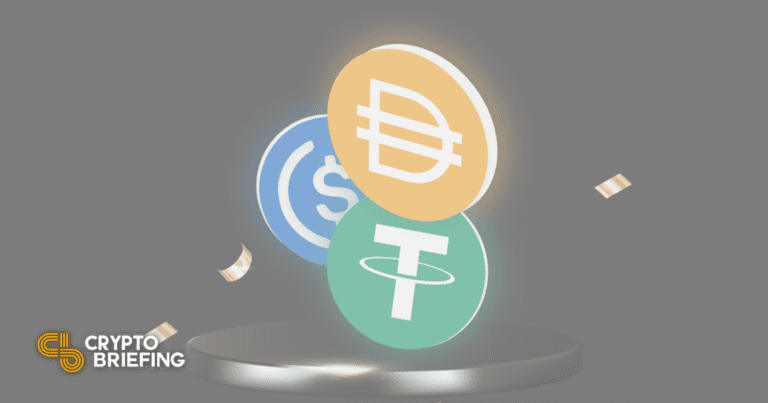Stablecoin redemptions have reached a historic high, with more than $10 billion redeemed across major issuers and about $3 billion retired from MakerDAO.
The total supply of stablecoins is decreasing, CoinMetrics data shows.
According to CoinMetrics head of research and development Lucas Nuzzi, the second financial quarter of 2022 is the first time in history that there are fewer stablecoins in circulation. He shared a chart showing that over $10 billion had been redeemed directly from the treasuries of major issuers such as USDT, DAI and PAX. USDC and BUSD, with supply rebounding after a multi-billion dollar drop in May, were exceptions to the rule.
Stablecoins are cryptocurrencies that aim to retain a 1:1 ratio with a government-issued currency of their choice, such as the dollar, the euro, or the yen. To achieve that goal some stablecoins are backed with reserves or collateral (USDT, DAI) while others rely on complex algorithms (FRAX, the late UST). Stablecoins may also be issued by centralized companies (Tether, Circle) or by decentralized protocols (MakerDAO, Frax Finance).
Nuzzi pointed out that of all centralized issuers, Tether was the one processing the most redemptions, with USDT’s total supply decreasing by about $7 billion across Ethereum, Tron, and Omnichain. He speculated that the “sharpness of that decrease [suggests] that a single entity, or small cohort, was behind” the redemptions.
He furthermore shared another graph indicating that MakerDAO’s DAI had seen its supply reduced from over $9.5 billion to about $6.5 billion. Nazzi interpreted the 30% decrease as partially the result of the “largest liquidation event in [the protocol]’s history.”
While the research purposefully excluded Terra’s UST, it is easy to imagine the sudden tightening of stablecoin total supply being due to the stablecoin’s collapse. UST broke its $1 peg in May and crashed the entire Terra ecosystem, directly wiping out over $43 billion in value from the market. The sudden increase in stablecoin redemption could be attributed to broad market concerns about protocol or company solvency.
Disclosure: At the time of writing, the author of this piece owned ETH and several other cryptocurrencies.
The information on or accessed through this website is obtained from independent sources we believe to be accurate and reliable, but Decentral Media, Inc. makes no representation or warranty as to the timeliness, completeness, or accuracy of any information on or accessed through this website. Decentral Media, Inc. is not an investment advisor. We do not give personalized investment advice or other financial advice. The information on this website is subject to change without notice. Some or all of the information on this website may become outdated, or it may be or become incomplete or inaccurate. We may, but are not obligated to, update any outdated, incomplete, or inaccurate information.
You should never make an investment decision on an ICO, IEO, or other investment based on the information on this website, and you should never interpret or otherwise rely on any of the information on this website as investment advice. We strongly recommend that you consult a licensed investment advisor or other qualified financial professional if you are seeking investment advice on an ICO, IEO, or other investment. We do not accept compensation in any form for analyzing or reporting on any ICO, IEO, cryptocurrency, currency, tokenized sales, securities, or commodities.
See full terms and conditions.
Get daily crypto briefings and weekly Bitcoin market reports delivered right to your inbox.

